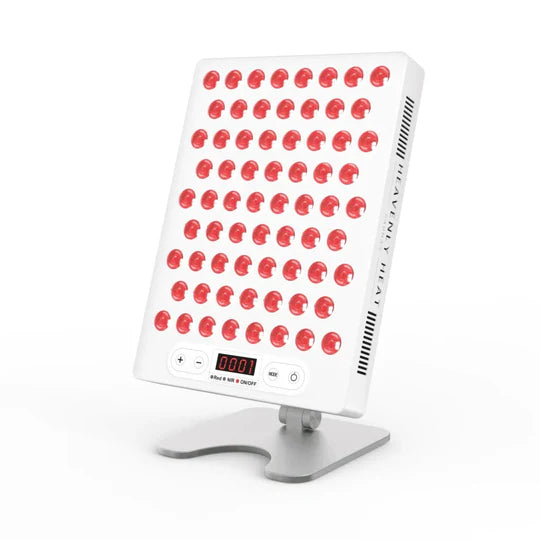17 Natural Ways to Keep Hot Tub Water Clean

Keeping your hot tub water clean doesn’t have to mean harsh chemicals or constant scrubbing.
With simple, natural methods, you can enjoy sparkling, clear water while protecting your skin and your spa.
From easy pre-soak habits to eco-friendly treatments, these 17 tips show you how to maintain a fresh, safe hot tub effortlessly.
Table of contents
Key Takeaways
Use Natural Enzymes: They break down oils, lotions, and debris, keeping water clear and reducing maintenance.
Balance Water with Baking Soda: Small, regular additions help prevent skin irritation and protect your hot tub system.
Rinse Before Entering: Showering removes oils and dirt, keeping your water cleaner and sanitizer more effective.
Avoid Lotions and Oils: Personal care products can cloud water, strain filters, and increase maintenance needs.
Try Natural Clarifiers: Eco-friendly clarifiers gather or break down particles, helping maintain sparkling clear water.

17 Natural Ways to Keep Hot Tub Water Clean
Regularly Change the Water
Change your hot tub water every three to four months, or more often with heavy use. Regular changes prevent mineral buildup, bacteria growth, corrosion, and chemical damage.
Drain and refill immediately if the water is cloudy, smells, or has scum. Monitor usage to maintain clear, clean water.
Use Natural Enzymes
Natural enzymes are a powerful, eco-friendly way to keep your hot tub water fresh and clear.
These biological helpers work by breaking down complex organic waste—like body oils, lotions, detergents, and cosmetic residues—into smaller, harmless particles that your spa system can easily filter out.
This not only reduces scum lines, odors, and foam but also frees up your sanitizer (like chlorine or bromine) to focus on killing bacteria instead of neutralizing waste.
Scientific studies back their effectiveness, showing that enzyme blends, such as proteases, polysaccharidases, and DNases, can break down biofilm structures, reduce bacterial density, and even enhance sanitizer performance.
Compared to traditional chemicals that mainly kill germs but often leave residues, enzymes go further by eliminating the root cause of cloudy water and buildup.
The result is clearer water, fewer odors, and less maintenance. Regular enzyme use also helps prevent waterline rings, extends filter life, and gives the water a smoother, more comfortable feel, all while being safe and environmentally friendly.
Add Baking Soda to Balance pH
Baking soda is one of the simplest and safest ways to keep your hot tub water balanced.
Chemically, it works by raising both the pH and alkalinity, acting as a gentle buffer that prevents the water from becoming too acidic.
If your pH is low, say around 7.0, adding just 1 to 2 tablespoons of baking soda in a standard 500-gallon tub can lift it by about 0.1 to 0.2 units.
To avoid sudden swings, it’s best to add small amounts consistently and then circulate the water so it distributes evenly.
Keeping pH balanced is more than a comfort issue, it prevents skin and eye irritation, stops plumbing corrosion, and protects your overall hot tub system.
On the flip side, water that’s too alkaline can create risks such as heart strain and confusion, so moderation matters.
Interestingly, the Australian Drinking Water Guidelines also highlight sodium bicarbonate’s role in correcting pH and providing alkalinity during water treatment, showing that its stabilizing power is trusted well beyond hot tubs.
Incorporate White Vinegar for Cleaning
White vinegar is a simple, natural option many hot tub owners use to clean surfaces, jets, and filters.
Thanks to its acidic properties, it’s especially effective at breaking down calcium deposits, water spots, and mineral buildup that can collect around the spa.
A common DIY solution is mixing one part vinegar with one part water, which safely cleans most surfaces without harming the vinyl or protective coatings.
For added protection, applying a product like 303 Aerospace Protectant after cleaning can help prevent UV damage and cracking on covers.
That said, it’s important to remember vinegar has its limits. While it works great as a cleaner, it does not sanitize spa water or kill bacteria, viruses, or algae the way chlorine or bromine does.
Overusing vinegar or letting it sit too long may also damage rubber seals or metal parts, so always rinse thoroughly after use.
In short, vinegar is best used as part of your cleaning routine, not as a substitute for proper sanitizers.
Rinse Swimmers Before Entering
One of the easiest yet most overlooked ways to keep hot tub water clean is simply rinsing off before you get in.
Research published in MDPI Sustainability highlights that many pollutants in pool and spa water come directly from swimmers, things like sweat, body oils, lotions, and dirt.
Their study found that when participants showered before entering a hot tub, the water showed noticeably fewer microbiological contaminants and harmful by-products, making it easier and more eco-friendly to maintain safe water quality.
Beyond research, personal hygiene plays a huge role in your spa’s health. Skipping a quick rinse introduces oils and chemicals that can throw off sanitizer levels, strain your filter, and even shorten the life of your hot tub’s motor.
That’s why public health guidelines and spa industry standards strongly encourage pre-swim showers: they reduce the spread of germs, prevent waterborne illnesses, and keep the water clearer and safer for everyone. In short, a simple rinse protects both your health and your hot tub.

Utilize Mineral-Based Sanitizers
Mineral-based sanitizers release small amounts of silver or copper ions to control bacteria and algae, reducing the need for harsh chemicals like chlorine or bromine.
They improve water clarity and softness while maintaining a balanced hot tub environment. Installation is simple, place the sanitizer in the filter compartment or a floating dispenser.
Add a Hot Tub Cover to Reduce Debris
A quality hot tub cover prevents leaves, dirt, and debris from entering the water. Choose a cover that fits snugly and check it regularly for tears.
Daily use reduces cleaning time and keeps debris out. Maintain the cover by washing it and applying protective sprays to prevent cracks. Proper care keeps your hot tub water clear and reduces maintenance.
Use Essential Oils Safely
Use essential oils in your hot tub sparingly and always dilute them. Oils can damage pumps, clog filters, and interfere with chemical sanitizers.
Stick to a few drops per session and choose oils safe for hot tubs to maintain water hygiene and protect your equipment.
Keep the Hot Tub Filter Clean
Check your filter every two weeks or more often with heavy use. Rinse it with water or soak it in a natural cleaner to remove buildup. Replace worn filters.
Prevent clogging by skimming the tub and limiting oils or lotions. A dirty filter reduces circulation and causes cloudy water, while regular cleaning keeps your hot tub efficient and water clear.
Skim Leaves and Debris Daily
Daily skimming removes leaves, twigs, and insects before they settle and affect water quality.
This prevents bacteria growth, pH changes, and algae, keeping water clear and chemicals effective. Use a soft net or skimmer to maintain a clean hot tub and ensure it’s ready for use.
Introduce Beneficial Bacteria
Beneficial bacteria maintain a healthy hot tub by breaking down oils, lotions, and organic matter.
They reduce the need for chemicals, prevent algae and biofilm, and keep water clear. Add bacteria weekly as recommended to support water balance and hygiene.
Monitor and Adjust Water Temperature
Maintaining water between 100–104°F supports user comfort and sanitizer effectiveness. Extreme temperature fluctuations can promote bacterial growth and cloudy water.
Adjust chemicals only after stabilizing the temperature to keep your hot tub safe, clean, and clear.
Avoid Using Lotions or Oils in the Water
Lotions, body oils, deodorants, and other personal care products may seem harmless, but they’re one of the biggest culprits behind cloudy, foamy hot tub water.
When bathers enter the spa with these products on their skin, they introduce impurities that upset the chemical balance and make the water harder to keep clean.
Over time, these substances can clog filters, forcing them to work harder and requiring more frequent cleanings or even replacements.
The result? Murky water, stubborn foam buildup, and a higher demand for sanitizers and shock treatments.
Health experts and spa care programs recommend a quick rinse or soap-less shower before soaking to reduce these impurities and protect your spa’s motor, jets, and filter system.
Even rinsing swimsuits thoroughly without detergent helps prevent unwanted residue from entering the water.
By keeping lotions and oils out of your hot tub, you’ll reduce maintenance, extend the life of your equipment, and enjoy consistently fresh, clear water.
Use a Natural Clarifier
If your hot tub water ever looks cloudy, natural clarifiers can be a safe and eco-friendly solution.
They work in a couple of different ways. One method, called flocculation, gathers tiny particles floating in the water and clumps them together, making it easier for your filter to catch them.
A great example is Chitosan Natural Clarifier, made from recycled crab and shrimp shells. It’s effective, environmentally friendly, and helps keep your spa water sparkling clear.
Another option is enzyme-based clarifiers. Instead of clumping particles, enzymes actually break them down, like millions of little Pac-Men eating away at contaminants.
A Natural Enzyme Concentrate, usually derived from plants, consumes oils, lotions, and other non-living debris that make water cloudy.
Research also supports natural clarifiers as effective alternatives to chemicals. For instance, Moringa oleifera seeds have been shown to reduce turbidity in water, proving that natural coagulants can be both powerful and sustainable.
Plus, they come with extra perks: preventing scum lines, reducing staining from metals, and even helping control calcium buildup in hard water
Clean the Hot Tub Shell Naturally
Clean your hot tub shell using natural cleaners like vinegar and baking soda. Vinegar removes grime and mineral deposits, while baking soda scrubs without scratching.
Focus on areas prone to mildew or soap scum with gentle brushes. Regular natural cleaning prevents mold, odors, and damage, maintaining a clear, healthy, and low-maintenance hot tub.
Control Sunlight Exposure to Prevent Algae
Sunlight promotes algae growth through photosynthesis. Limiting exposure slows algae development and keeps water clear.
Shaded hot tubs stay cleaner longer, while excessive sunlight heats water, disrupts chemical balance, and encourages algae.
Controlling sunlight with covers, umbrellas, or placement helps prevent algae and maintain water clarity naturally.
Establish a Regular Maintenance Schedule
Creating a weekly routine simplifies hot tub care. Perform daily tasks like skimming and checking water, clean filters weekly, and change water monthly or seasonally.
Test pH regularly to maintain proper chemical balance. Seasonal checklists help prepare for changes in use or weather.
Consistent maintenance prevents costly repairs and keeps your hot tub clean and safe year-round.
FAQ
Can I keep my hot tub water clean without chemicals?
Yes, you can keep hot tub water clean naturally by combining regular water changes, rinsing swimmers before entry, using natural enzymes, baking soda, vinegar, mineral-based sanitizers, and natural clarifiers. Daily skimming, clean filters, limiting lotions, and controlling sunlight also help. While these methods reduce chemicals, consistent maintenance and careful monitoring are essential to prevent bacteria, algae, and cloudy water.
How often should I change hot tub water if I don’t use chemicals?
If you don’t use chemicals, change hot tub water every 6–8 weeks, or sooner if cloudy, foamy, or odorous. Frequency depends on usage, bather load, and water quality. High total dissolved solids also indicate a need for fresh water to maintain cleanliness and safety.
Are there risks to using only natural cleaning methods for hot tubs?
Using only natural cleaning methods for hot tubs poses serious risks, including bacterial, fungal, and algal growth that can cause skin irritations, infections, and respiratory issues. Household cleaners like vinegar clean surfaces but don’t sanitize; specialized sanitizers and regular water testing remain essential for safe use.







































